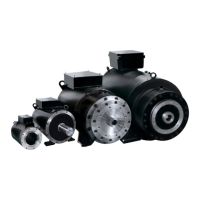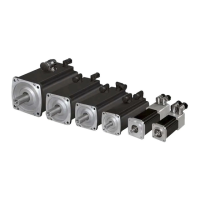TAM 00682 18
DSC 045-100 07 / 2012
Three-phase synchronous motor English
Malfunction Cause Remedy
Vibrations Coupling element or driven
machine poorly balanced
Inadequate alignment of the
drive train
Fixing screws loose
Rebalance
Realign machine set
Check and tighten screwed
connections
Running noises Foreign matter in motor
Damaged bearing
Repairs carried out by motor
manufacturer
Repairs carried out by motor
manufacturer
Temperature rise in the motor
Motor temperature monitoring
unit trips
Drive overload
Motor surface/air ducts soiled
Cramped installation
conditions
Brake does not release
sufficiently: grinding brake
Check motor load and
compare with nameplate
Clean motor surface/air ducts
Check motor has been
mounted in accordance with
Sect. 2.6 and 3
Repairs carried out by motor
manufacturer
Current consumption too high,
motor torque too low
Indexing angle incorrect Check indexing angle and
adjust if necessary
Table 3: Malfunctions
6 Inspection and maintenance
Working on the electric motor:
Work must not be carried out on the electric motor until the motor has come to a
standstill, is electrically isolated, and has cooled down. All connections, such as screw
connections, that were loosened when working on the motor must be tightened again
after the inspection and maintenance work.
When carrying out work on the motor, please observe the technical instructions and
notes in the respective sections in these Commissioning and Maintenance
Instructions.
When carrying out maintenance work, observe all safety instructions which also apply
to the commissioning of the motor (see Sect. 5.1).
Attention: if the optional holding brake is fitted, this brake must not perform a safety
function during work on the motor (e. g. retaining loads)!
6.1 Inspection
Depending on the severity of soiling on site, cleaning will have to be carried out regularly to
guarantee the continuous adequate dissipation of heat.
If an optional brake is fitted, wear limits are specified (e. g., maximum permissible operating air
gap, maximum number of emergency braking operations). The actual degree of wear on the brake
must be checked at regular intervals. If the permissible wear limits are reached, the brake must be
replaced (see Sect. 6.2).
If an optional shaft sealing ring is used, it must be checked at regular intervals to ensure it is
functioning correctly (leakage).

